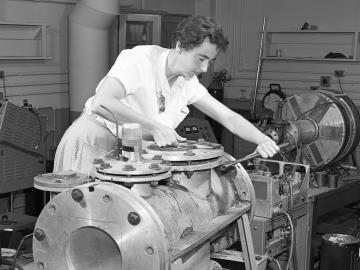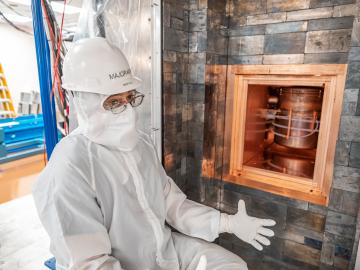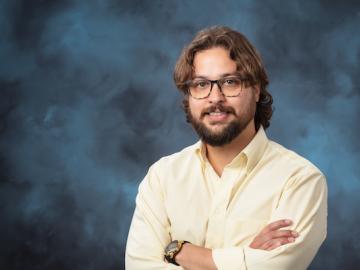
Filter News
Area of Research
- (-) Materials (28)
- (-) National Security (12)
- (-) Neutron Science (12)
- Advanced Manufacturing (3)
- Biology and Environment (16)
- Computational Biology (1)
- Electricity and Smart Grid (1)
- Energy Science (56)
- Fusion and Fission (7)
- Materials for Computing (3)
- Nuclear Science and Technology (6)
- Supercomputing (32)
News Topics
- (-) 3-D Printing/Advanced Manufacturing (7)
- (-) Advanced Reactors (1)
- (-) Artificial Intelligence (12)
- (-) Clean Water (3)
- (-) Grid (5)
- (-) Physics (10)
- (-) Polymers (5)
- (-) Security (5)
- (-) Transportation (5)
- Big Data (5)
- Bioenergy (7)
- Biology (6)
- Biomedical (10)
- Biotechnology (1)
- Buildings (2)
- Chemical Sciences (8)
- Composites (2)
- Computer Science (20)
- Coronavirus (6)
- Cybersecurity (8)
- Energy Storage (7)
- Environment (11)
- Exascale Computing (1)
- Fossil Energy (1)
- Fusion (2)
- High-Performance Computing (5)
- Hydropower (1)
- Isotopes (6)
- Machine Learning (11)
- Materials (23)
- Materials Science (21)
- Mathematics (1)
- Microscopy (6)
- Nanotechnology (9)
- National Security (23)
- Neutron Science (57)
- Nuclear Energy (11)
- Partnerships (4)
- Quantum Computing (2)
- Quantum Science (2)
- Simulation (1)
- Space Exploration (2)
- Summit (2)
Media Contacts

Tomonori Saito, a distinguished innovator in the field of polymer science and senior R&D staff member at ORNL, was honored on May 11 in Columbus, Ohio, at Battelle’s Celebration of Solvers.

Few things carry the same aura of mystery as dark matter. The name itself radiates secrecy, suggesting something hidden in the shadows of the Universe.

Andrea Delgado is looking for elementary particles that seem so abstract, there appears to be no obvious short-term benefit to her research.

Chemist Jeff Foster is looking for ways to control sequencing in polymers that could result in designer molecules to benefit a variety of industries, including medicine and energy.

The old photos show her casually writing data in a logbook with stacks of lead bricks nearby, or sealing a vacuum chamber with a wrench. ORNL researcher Frances Pleasonton was instrumental in some of the earliest explorations of the properties of the neutron as the X-10 Site was finding its postwar footing as a research lab.

For nearly six years, the Majorana Demonstrator quietly listened to the universe. Nearly a mile underground at the Sanford Underground Research Facility, or SURF, in Lead, South Dakota, the experiment collected data that could answer one of the most perplexing questions in physics: Why is the universe filled with something instead of nothing?

In human security research, Thomaz Carvalhaes says, there are typically two perspectives: technocentric and human centric. Rather than pick just one for his work, Carvalhaes uses data from both perspectives to understand how technology impacts the lives of people.

When the COVID-19 pandemic stunned the world in 2020, researchers at ORNL wondered how they could extend their support and help

Researchers at ORNL are tackling a global water challenge with a unique material designed to target not one, but two toxic, heavy metal pollutants for simultaneous removal.

Two decades in the making, a new flagship facility for nuclear physics opened on May 2, and scientists from the Department of Energy’s Oak Ridge National Laboratory have a hand in 10 of its first 34 experiments.


